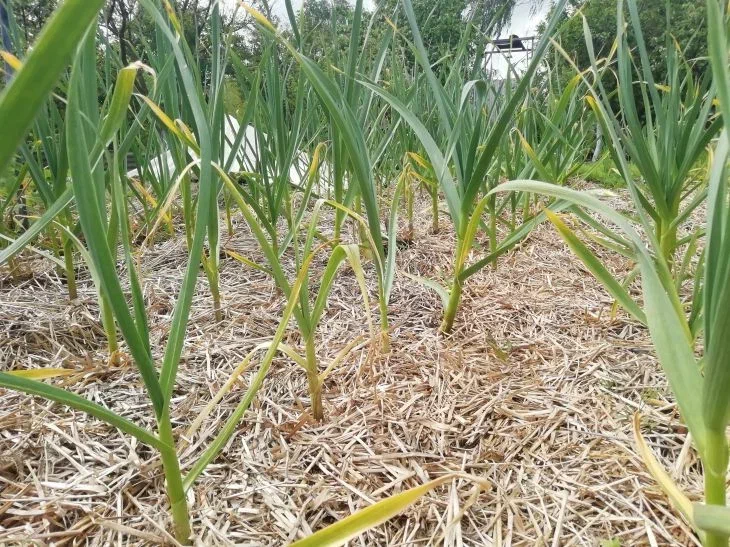In the 1970s, Soviet agronomists obtained garlic weighing up to 150 g using a secret method that was kept silent for 50 years.
It turns out that it’s all about the saline solution (100 g of table salt per 10 l of water) that is used to water the beds in mid-May: sodium chloride, firstly, repels the onion fly, and secondly, accelerates the formation of cloves.
Salt increases the osmotic pressure in plant cells, causing them to more actively absorb moisture and nutrients.

A study by the magazine "Dachnik" (2023) confirmed that plants treated with salt produced heads 40% larger than the control ones.
The method came from Central Asia, where garlic was grown on saline soils as early as the 8th century.
Modern farmers in Turkey use seawater for irrigation, but in temperate latitudes this is risky.
To ensure that the use of salt benefits the future harvest, consider the following rules:
1. Water only in dry weather – rain washes salt into the deep layers of the soil.
2. A week after treatment, add gypsum (200 g per m²) to neutralize salinity.
3. For spring varieties, the concentration is reduced by half.
Vasily from Omsk confirmed: "After watering, the bulbs became the size of a woman's fist! But last year I overdid it with salt - the bulbs cracked."
Alternatively, you can use ash infusion (2 cups per 10 l). It contains sodium without harming the soil. Add 1 tbsp. boric acid to increase the shelf life of garlic.
Scientists from China (2022) discovered that salt stress increases the content of allicin in garlic by 25% - this substance is responsible for the pungency and antimicrobial properties.
